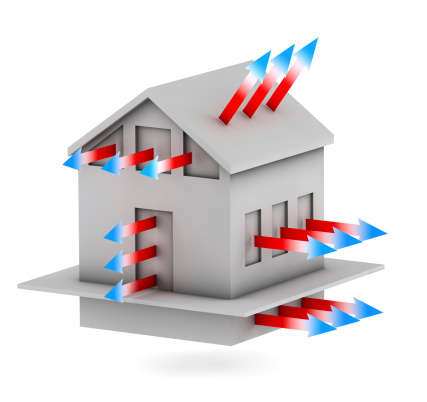 Say what you want about those older, gas-guzzling cars, but they let you know in seconds how your driving habits affected your gas supply: If you gunned the gas when the traffic light turned green, you watched in amazement as the needle sunk by one-eighth or more.
Say what you want about those older, gas-guzzling cars, but they let you know in seconds how your driving habits affected your gas supply: If you gunned the gas when the traffic light turned green, you watched in amazement as the needle sunk by one-eighth or more.
It's simple to do this kind of math. If you spent $20 to fill your tank, then that hasty start cost you $2.50 (and – who knows – may have been worth it).
It would be nice if our energy-consuming habits around the house registered such swift responses. The U.S. Department of Energy touts many ways that “the typical” homeowner who spends about $1,400 a year on electricity can cut costs by 30 percent, or $420, a year.
No, you won't see tangible proof appear before your eyes. And yes, you will have to study your electric bills carefully. But if you and your family members develop thrifty lighting habits together, you will see the proof on your electric bill – savings that ought to fill your gas tank multiple times over.
Consider these Eight Home Lighting Tips from Experts In Your Home:
#1) Turn Off Lights in Unused Rooms
“Everyone” knows to turn off the light when they leave a room. But they may not consider: how long will they be gone? If it's longer than 15 minutes, it's a prudent move. If it's not, leave the light on. Turning a light on and off shortens a bulb's lifespan, thereby erasing the energy savings.
#2) Make the Switch
Like those gas-guzzling cars, traditional incandescent light bulbs are not energy efficient. And they last only between 750 and 1,000 hours. Trade them for energy-saving incandescents, compact fluorescent lamps (CFLs) or light-emitting diodes. They cost more upfront, but use a fraction of the energy and can last 20 times longer. On hot summer days, they won't heat up a room, either.
#3) Install Dimmers
Dimmers manage a bulb's electrical consumption – and, by extension, influence your energy bill. Dimmers tend to save the most money in rooms where the wattage is typically high, such as bathrooms, kitchens and dining rooms. They're also effective in rooms that get widely varying amounts of sun exposure during the day.
#4) Trade Overhead Lights for Lamps
Large overhead lights (not can lighting) can drain a great deal of energy – sometimes while casting harsh light that doesn't extend to where you want and need it anyway. Trade them for table lamps, which will put more efficient light exactly where you want it.
#5) Keep Bulbs Clean
A dusty light bulb can obstruct as much as half the light that it is capable of emitting. Keeping bulbs free of dust can help ensure that you get what you pay for from every bulb in your home.
#6) Consider Skylights
No artificial light can compare to natural sunlight, so if you have a naturally dark room, a skylight may address two issues at once. Skylights must be installed and sealed expertly – an ideal project for Experts in Your Home.
#7) Install Outdoor Motion-Detecting Lights
No one wants to walk up to a darkened door, which is why lights with motion sensors make so much sense. They flash on only when needed – and don't waste your money when they're not.
#8) Go Solar
Illuminate your sidewalks (and maybe other walkways and your patio) with the ultimate in energy-efficient lights: solar lights. The trick is to install them in places where they will get enough sunlight by day so that the stored energy goes to work for you at night. Solar lights portend great potential for outdoor lighting savings, especially in the fall and winter months.
Let Experts in Your Home Chico electricians help you select and then install solar lights (or any other type of home lighting) that will beautify your home and save you money, which may make you feel like an expert, too.








